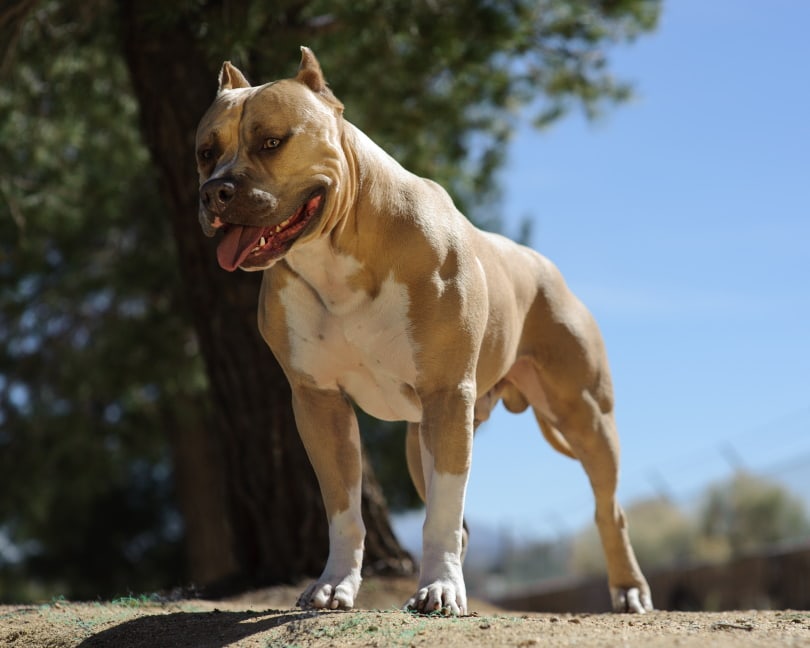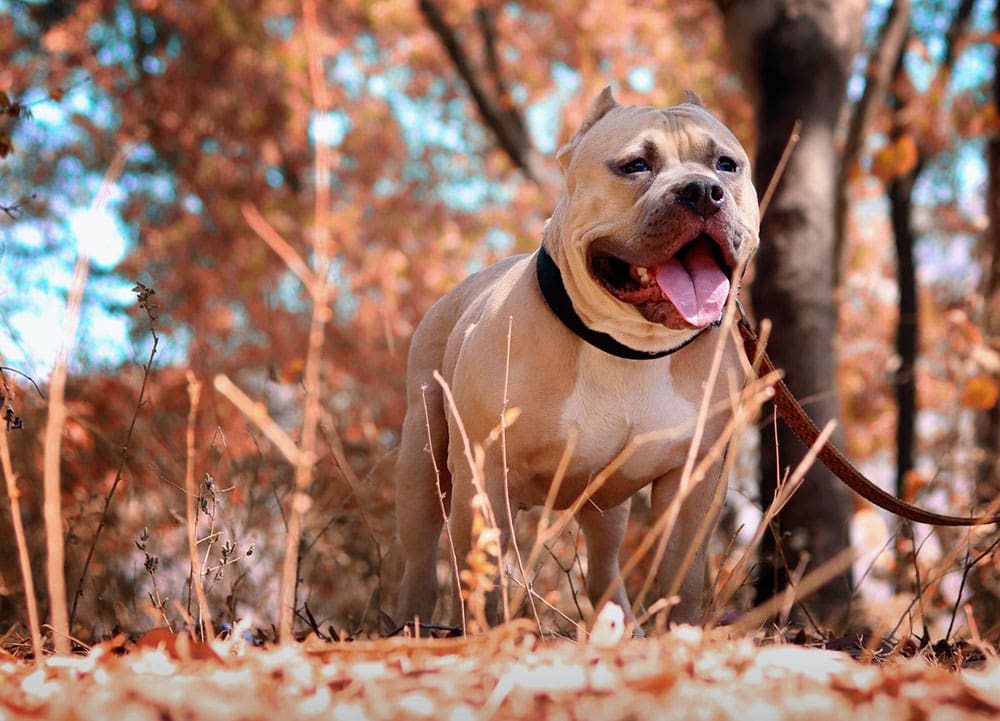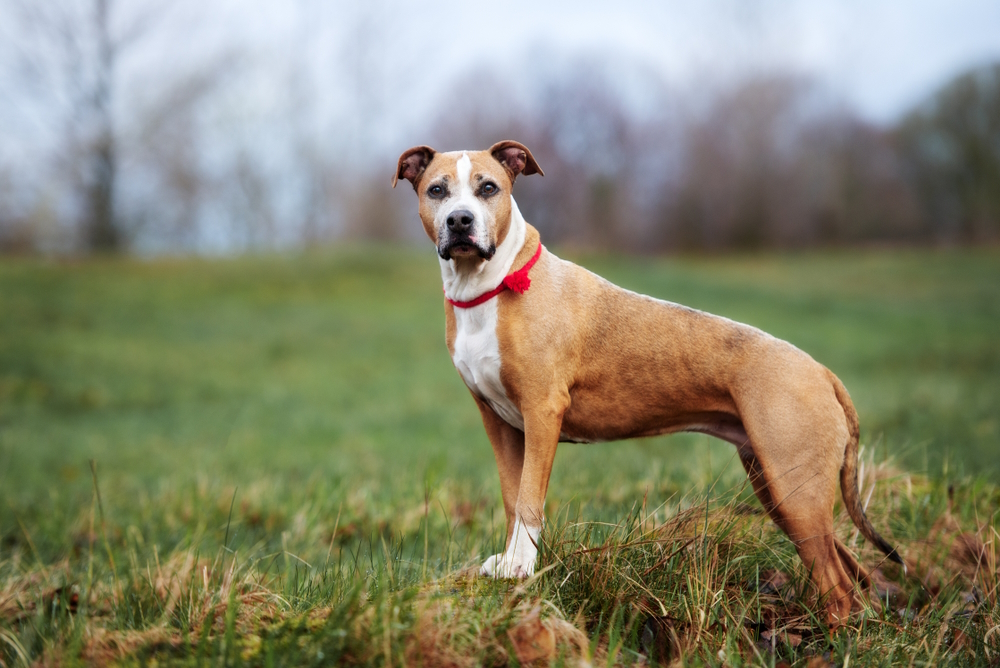So, you want to train your Pit Bull to be a guard dog. Fortunately, with your dog’s favorite toys and treats, along with your patience and consistency, your dog can alert you to “stranger danger” in no time. Here is your step-by-step guide to help you and your dog reach that goal.

The 4 Steps to Train a Pit Bull to Be a Guard Dog
1. Basic Obedience Training
During each training session, the dog should give you his undivided attention. You will need to teach basic commands. Using hand signals, it should know to sit, stay, and come. He should respond to your commands 100 percent of the time. When teaching your dog basic commands, it should also know automatic commands. For instance, the dog should automatically sit in front of you when it comes to you. The dog should learn to “leave it” and “bark” on command.

2. Socialization
You should begin to socialize your Pit Bull puppy between seven and 12 weeks old. It should get accustomed to meeting strange animals and people. This will prevent it from becoming defensive or aggressive with every person and animal it sees. The dog should not be allowed to chase other animals or female dogs in heat.
Regular walks will help your pup get acquainted with its environment, the noises from the neighborhood, and traffic sounds.
Teach your pit bull to interact properly with children in the household, other pets, and all family members. They should respect all others in their environment. You want to be sure that the dog sees interaction with people in a positive way. People should mean toys, treats, love, and belly rubs.
3. Barking on Command
Teach your Pit Bull to bark at a stranger. You may need to get someone to help you with this lesson. Some dogs have difficulty learning to bark on command. Here are steps to train your dog to bark on command.
- Tell your dog to stand/stay. Do not let it sit.
- Hold your dog’s favorite toy in front of him but out of its reach.
- Tell it to “speak.”
- When it gets frustrated because it cannot have the toy, your dog may bark. Give it the toy and praise it. This can be difficult to teach and may leave you frustrated. Some dogs will bark immediately, and others will just give up the toy.
- Repeat the command with a different toy. You should reward the dog with a treat every time it responds. It also gets the toy!
- The next step is to command your dog to “speak.” When it barks, in a quiet voice, say “whisper.” If your dog is in tune with you, it should bark quietly. If he does, give it a “good dog” and a treat.
- In the next training session, put the toy in front of your dog but do not say “whisper” or “speak.” When it barks out of frustration, say “quiet.” When your dog stops barking, offer a treat and praise.
- Do the commands “quiet”, “speak”, and “whisper” twice a day for 10 days. The sessions should be in five-minute intervals. Hopefully, this will do the trick.
Remember, not all dogs are good at this command. Yours may be one of them. Be patient and consistent.
Pay attention to your dogs’ natural tendencies. Some dogs bark naturally and need to be taught to stop barking on command. After one or two barks, tell it to sit and stop. If your dog continues, tell it to get “down.” This will make it harder for your dog to bark.

4. Test the Dog’s Alert Bark
If you have achieved the barking command, you’ll need to test it on someone else. Have a friend or family member ring the doorbell or knock on the door. Command your pit bull to bark. Give it a treat each time it responds.
Practice makes perfect. Continue to practice with your family member until the dog makes the association. Eventually, you can teach your dog to respond to the knock or doorbell instead of the “bark” command.
Once your dog learns to alert you to something or someone at the door, tell it “Quiet” and give it a treat if it stops barking.

Conclusion
There you have it. This step-by-step guide will help you train your dog to respond to basic commands so it can learn to guard you and your home in four straightforward steps. Remember to be patient and use positive reinforcement. Consider it a bonding experience for you and your pet. Happy training!!
- See also: How to Train a Pitbull: Expert Tips
Featured Image Credit: otsphoto, Shutterstock



















